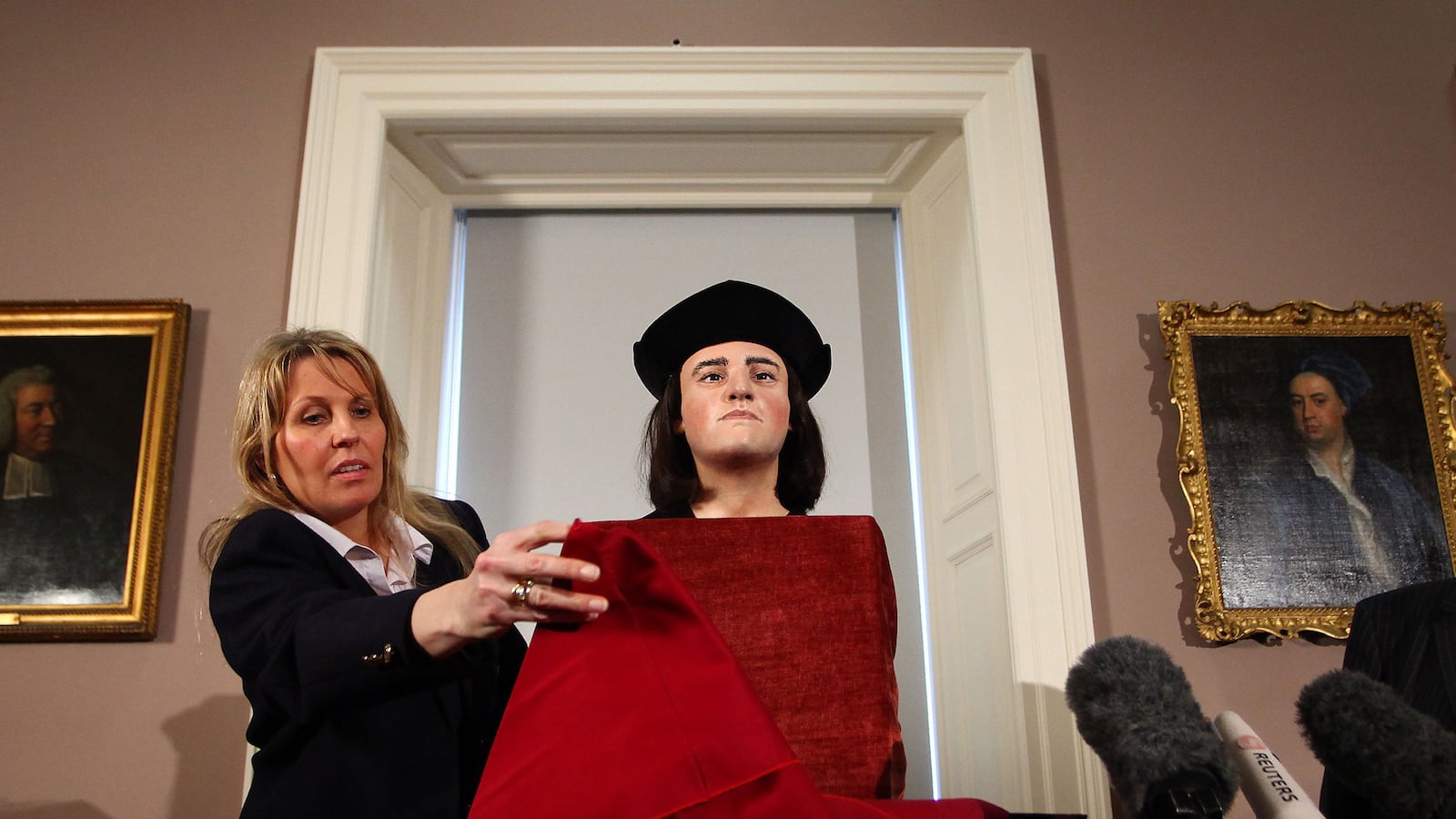You have to be quite a bastard to get your own royal fan club. Charles I has one—The Society of King Charles the Martyr celebrates the 17th-century Stuart king who was executed in the English revolution.

And so does Richard III, in the form of the Richard III Society, whose members (aka Ricardians) are devoted to rehabilitating the name of the most notorious medieval monarch: a man whom Shakespeare famously painted as a deformed, black-souled fiend, determined to “seem a saint, when most I play the devil.”
The Ricardians have been in good spirits this week, after the remains of their hero were formally identified by a team of cartographers, archaeologists, genealogists, bone specialists, and DNA analysts, working out of Leicester University and coordinated by Philippa Langley, a member of the Richard III Society. At a press conference, Monday, the team stated that it was “beyond reasonable doubt” that a skeleton dug up last fall under a parking lot was indeed that of the long-lost king.
The skeleton had a curve in its spine, a lump hacked from its skull, spindly arms and the marks of “humiliation wounds” inflicted after death, including a knife to the backside. It had been buried in a shallow grave, perhaps with its hands tied, certainly with little ceremony. It had not exactly rested in peace.
The revelation has been a massive (and craftily orchestrated) PR coup for the city of Leicester. It has also been a boon for the Ricardians. Their chairman, Dr. Phil Stone, wrote yesterday that he hoped the discovery would “open up the debate about the king and his reputation.” And it has.
Some backstory—in case you skipped history and/or English lit (and/or all the news this week so far). Before Richard III was king he was a notably loyal lieutenant to his brother, King Edward IV, keeping order in the north on behalf of the king. But when Edward IV died, Richard usurped the crown from his brother’s 12-year old son, Edward V, justifying his actions on the spurious grounds that the boy and his brother were illegitimate. Later, Richard quite probably—although this is ultimately unproven—had Edward V and his brother murdered. (You see where Game Of Thrones gets it from?)
Despite a reign that featured some relatively enlightened policies, particularly in the realms of social justice and public finance, Richard’s brief reign was stained by the crime of his usurpation—a wild action that threw into disarray the fragile politics of a realm only recently recovered from civil war.
The immediate product of the usurpation was Richard’s own defeat: killed by another usurper, Henry Tudor, at the battle of Bosworth on August 22, 1485. But the longer-term product was a blackening of Richard’s name. Successive writers loyal to the incoming Tudor regime built up an image of Richard from a usurper king who met a sticky end to a crippled beast whose inner malice was perfectly expressed by his outward grotesqueness. “That crewell nature of his did so rage agaynst yt self in that lyttle carkase,” wrote the early 16th-century historian Polydore Vergil. Everyone else—More, Edward Hall, Raphael Holinshed, and Shakespeare—followed suit.
That image is what the Ricardians still kick against today. The gap between the Tudors’ black propaganda and the reality of Richard’s life and career seems to strike them as an offense against all reason and honor. They have striven long and hard to humanize the man—as has been done this week—in the hope that it may help others to reassess his reputation.
Not everything, of course, has turned out perfectly. When I spoke to one Ricardian last fall, before much work on the skeleton had been completed, she speculated that “if [the skeleton] is Richard and he wasn’t a hunchback, then we can say ‘that’s one thing the Tudors got wrong. What else did they get wrong?’”
Unfortunately, we now know that Richard was, if not precisely a hunchback, pretty heavily afflicted by a spinal deformation from around the age of 10. His weak, thin, arms, and lopsided shoulders would have presented exactly the sort of impression that the Tudor writers gave him. Vergil again: “He was lyttle of stature, deformyd of body, thone showlder being higher than thother.” So in fact, one of the earlier Tudor propagandists got it spot on.
Where does this leave Richard? Historically, we haven't learned very much at all. The Leicester findings mostly confirm reports about the last hours of his life and his death. As was suspected, he was killed by a blow from behind while unhorsed. He was clearly abused after his death. He was buried in ignominy. Moreover, his appearance matches what many of his detractors stated, even if his character is no better known. Of his deeds nothing changes. He was a loyal servant, a dastardly usurper, and a well-meaning but doomed king.
But even in the absence of much new information, the Richard III Society will surely flourish. The evidence was not quite as helpful to them as they may have hoped, but the publicity has been tremendous. Richard is being debated. Indeed, 527 and a half years after his violent death in the English Midlands, Richard III finds himself dug up, plastered all over the TV bulletins, and trending on Twitter. That’s the way to get yourself a new generation of fans.






